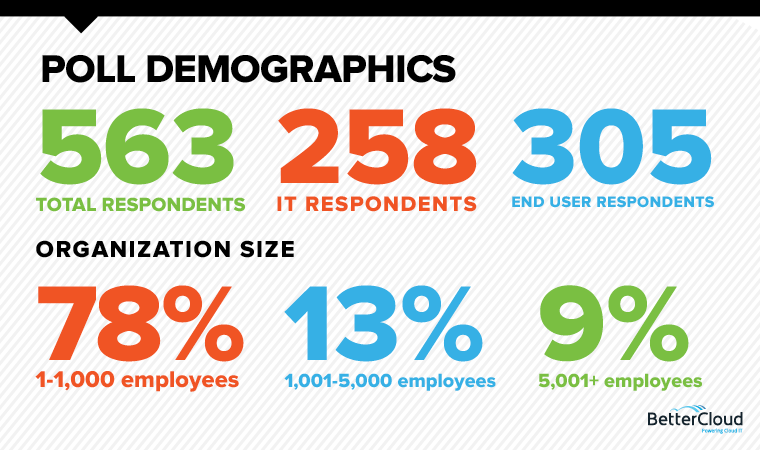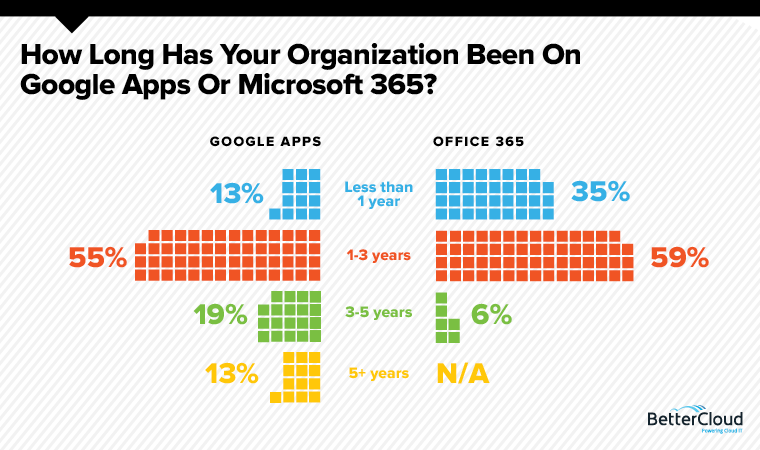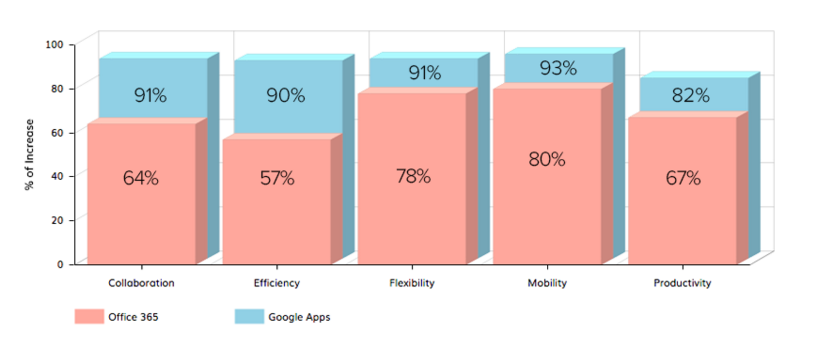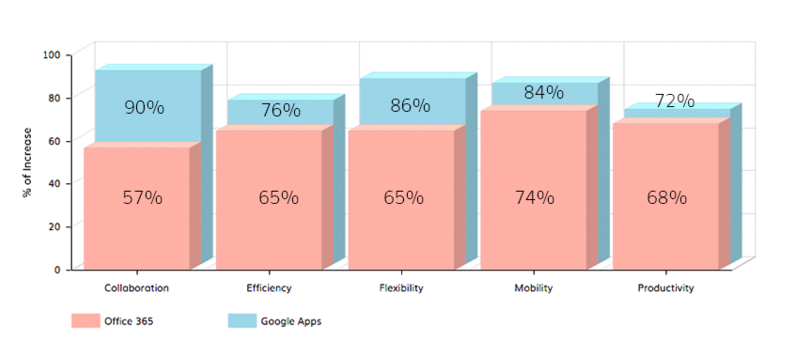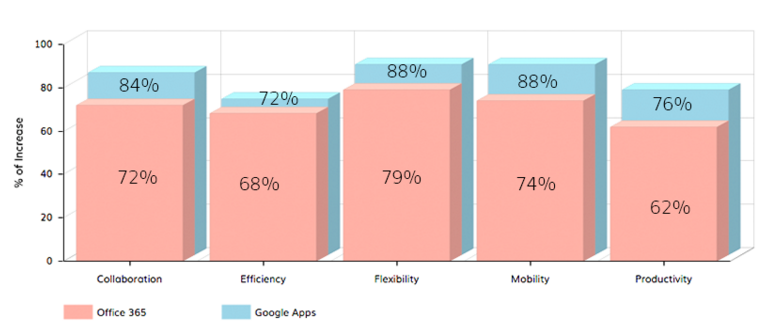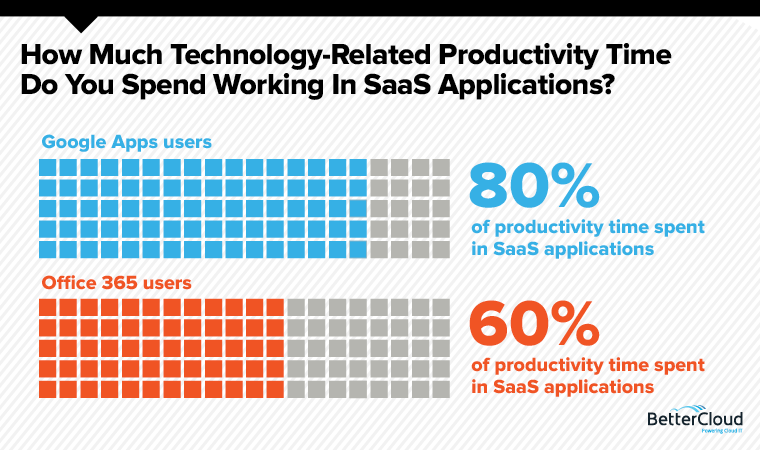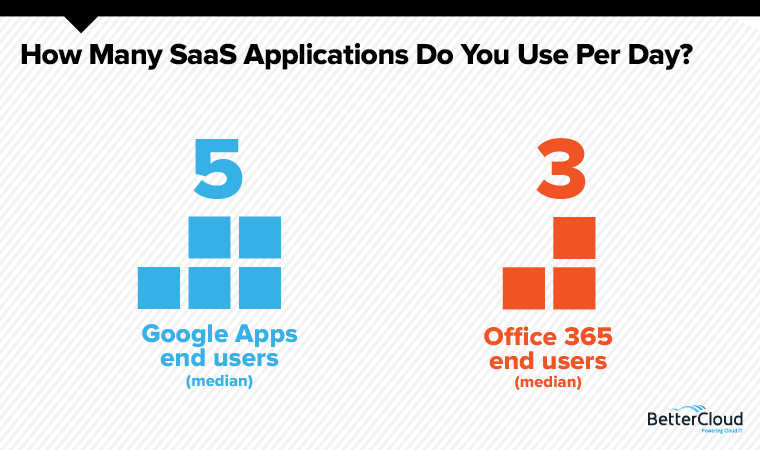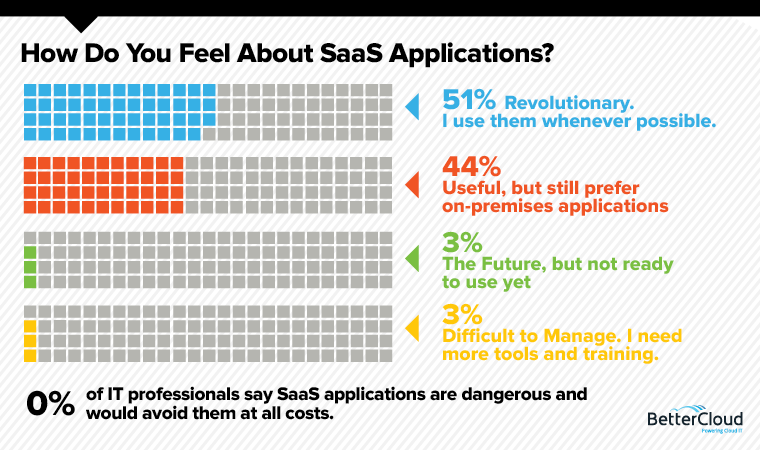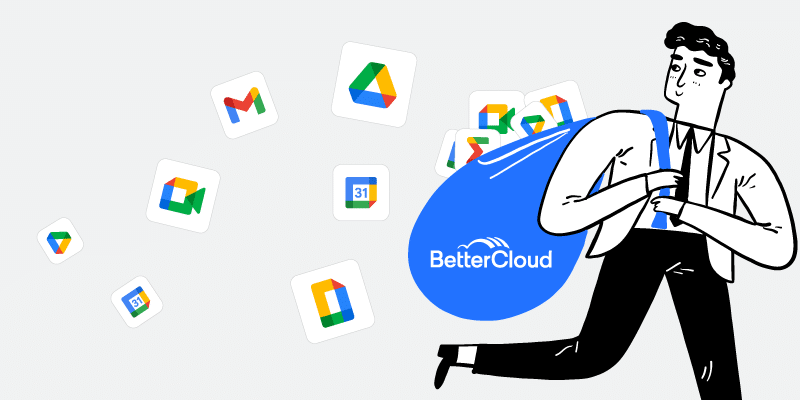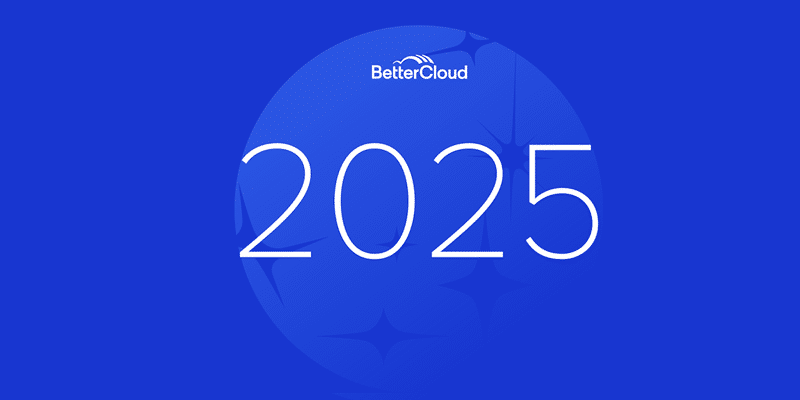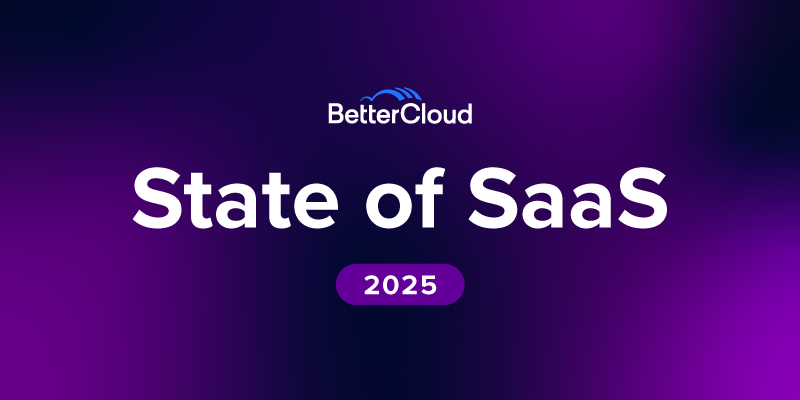Google and Microsoft's Battle for the Enterprise: How Users Are Interacting With SaaS Applications
April 20, 2016
6 minute read

History is decorated with storied rivalries. Coca-Cola vs. Pepsi. Yankees vs. Red Sox. Ali vs. Frazier. Over the past several years, a new rivalry has emerged in the modern workplace, and its implications are far greater than soda and sports.
Google Apps vs. Office 365 has quickly become one of most intriguing competitions in modern business–two of the largest organizations in the world vying for your desktop, laptop, smartphone, browser, and more. The stakes don’t get much higher.
We’ve covered the cloud office saga at length, uncovering interesting differences between Google Apps and Office 365 customers. Today, we add a new chapter of insight by releasing part two of our March Trends in Cloud IT poll results. (Read part one here.)
We gathered and analyzed answers from 563 users of Google Apps and Office 365 to gain unprecedented insight into the adoption of cloud office systems and the usage and mentality of SaaS application users.
Key Takeaways
- Office 365 Adoption Picks Up Steam: More than a third (35%) of Office 365 users claim their organizations adopted Office 365 within the last year. Just 13% of Google Apps users say the same.
- SaaS Applications Make Employees More Successful: An overwhelming 91% of Google Apps users say SaaS applications help them succeed more than desktop alternatives. Office 365 users, on the other hand, are more attached to their desktop tools. Just 68% of Office 365 users find the SaaS applications make them more successful than their desktop alternatives.
- Stark Difference in Time Spent Using SaaS Applications: Google Apps users say they spend 80% of technology-related productivity time working with SaaS applications. That’s 33% more time than their Office 365 counterparts.
- Daily SaaS Applications Use Higher for Google Apps Users: On an average day, Google Apps users interact with five SaaS applications, while Office 365 users interact with three.
- Most Cloud IT Professionals Call SaaS Applications “Revolutionary”: 51% of surveyed cloud IT professionals using either Google Apps or Office 365 call SaaS applications “revolutionary” and “use them whenever possible.” The second most popular response: “SaaS applications are useful in some cases, but not always ideal.”
Cloud Office System Adoption
Within the last year, more than a third of Office 365 users (35%) saw their organizations adopt Microsoft’s cloud office system. However, it’s important to note that “adoption” and “use” carry entirely different meanings, especially for Office 365.
In many cases, Office 365 is “adopted” only in name, not practice. Even if an organization purchases Office 365 licenses, employees may not be using the browser-based Office 365 suite. In fact, many users will spend the majority–if not all their time–working the way they always have on local versions of Microsoft Office. As a result, they lose out on most SaaS-related benefits. Office 365 users need to interact with the cloud office system’s SaaS applications to see benefits.
In previous research, we’ve found Google Apps admins are more likely to report an increase in collaboration, efficiency, flexibility, mobility, and productivity among their workforce than organizations using Office 365.
Impact of Google Apps and Office 365
1-1,000 Employees
1,001-5,000 Employees
5,001+ Employees

Note: The three graphics above–and their data–are from our 2015 Trends in Cloud IT Survey, which you can read here.
Still, rapid adoption within the last year is a good long-term sign for Microsoft. Eventually, users will make their way to the SaaS Office 365 tools, but how long that will take remains unclear.
On the other end of the spectrum, almost a third (32%) of Google Apps users have been using the suite for more than three years, and 13% have used it for more than five years–a century in technology terms.
SaaS Success
An overwhelming majority (91%) of Google Apps users feel SaaS applications give them the best shot at success. Comparatively, just 68% of Office 365 users say the same.
Many factors contribute to Google’s success in this area in this area. Here are a few of our theories:
- Youth: Organizations with employee bases between the ages of 18-34 are 55% more likely to use Google Apps than Office 365. After all, millennials are much more adept at using new technology.
- Experience: Not only have Google Apps users been working at organizations using Google Apps for several years, but it’s also likely they used the tools during their high school and college days due to Google’s penetration in education.
- Usability: This isn’t an indictment of Office 365; it’s simply a newer product. Only in the past few years has Microsoft stepped into its new cloud-first, mobile-first persona. With the resources at Microsoft’s disposal, they’re not going to lag behind Google for long.
Time Spent Working in SaaS Applications
Compared to Office 365, Google Apps users are spending 33% more time working in SaaS applications. It’s important to note that this stat includes ALL SaaS applications, not just those native to Office 365 or Google Apps.
There are many reasons why Microsoft users may not be using Office 365’s SaaS applications.
For instance, take this hypothetical scenario: You’ve been with your company for 20 years and self-identify as a Microsoft faithful. You love Outlook. You love Word. You’ve mastered the Microsoft Office suite over the course of your career. One day you come into work and your IT team tells you that you now have the “option” to use Office 365 and work in the “cloud.” Would you be keen to make the change?
This problem challenges many Office 365 organizations around the world; its users are typically older in age and less likely to change their work habits.
SaaS Applications Used Per Day
Not only are Google Apps users spending more time working in SaaS applications, but they’re also using more of them on a day-to-day basis. Google Apps users interact with two more SaaS applications (5) per day than Office 365 users (3).
For many, SaaS applications are an acquired taste. Much like taste buds, work styles change over time when users are continually introduced to new technologies.
A good way to facilitate the transition to Office 365’s SaaS applications is to steer users into the browser when they’re having issues related to their local Office applications. Resistant users may soon view SaaS applications as remedies instead of nuisances.
SaaS Feelings
Security concerns aren’t worrying the majority of IT respondents. 51% say SaaS applications are “revolutionary” and claim to “use them whenever possible.” However, many aren’t so easily swooned. 44% of IT professionals say SaaS applications are “useful in some cases, but still prefer on-premises applications.”
The truth is: SaaS applications may not make sense in certain scenarios. Ignoring things like security, costs, company size, culture, infrastructure complexity, and prior investments could be catastrophic. However, not keeping an open mind and rejecting change can be equally devastating.
Many mega-corporations have lost major market share because they vehemently resisted change or moved too slowly–BlackBerry and Nokia being good examples.
A tempered approach to SaaS application adoption is common as compliance and security are legitimate concerns in many industries. Some IT professionals may slow to transition to SaaS applications, not necessarily because they believe SaaS applications are a liability, but because government compliance policies are unclear or age-old security procedures are difficult and time-consuming to calibrate.
Final Thoughts
The benefits of SaaS applications are clear, and as we’ve discovered in part one of our March Trends in Cloud IT poll, many workers are clamoring to use them. Today, organizations using Google Apps appear to be capitalizing on SaaS applications more than their Office 365 counterparts, but recent and rapid adoption of Office 365 is a step in the right direction for Microsoft.
However, if Office 365 adoption fails to translate into actual use, it will all be for naught as SaaS-related benefits will continue to slip through the cracks.
Up Next: Read part one of our March Trends in Cloud IT poll results.



